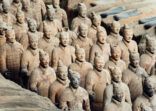The new China Securities Regulatory Commission (CSRC) guidelines, reported by China Fund News, the publication under the state-run People’s Daily, aim to align the interests, risks and returns of the fund manager and investors.
In China, there are two common types of performance-based fee models. One type involves lowering fixed management fees for specified underperformance versus the benchmark while charging higher fixed fees for outperformance.
The second type strictly deals with outperformance. Investors provide a bonus to the fund manager if the fund outperforms to a specified target over the benchmark.
The regulator proposed several rules. An asset management firm has to seed any fund carrying a performance fee with RMB 10m ($1.5m) minimum. At least 10% of that should come from the portfolio manager.
Another proposed requirement is that all products that apply any performance fees need to have either an absolute return strategy or invest in bonds.
Overall annual charges of such funds cannot exceed 5%, the new guidelines suggest. The high watermark principle will be applied as well – a performance fee is charged only when the net asset value (NAV) outperforms the preset benchmark and only when the NAV is higher than the previous year.
There are also requirements for the fund managers. They should have at least five years of experience in equity or bond-related investment management.
If a manager receives an annual bonus, 30% of the bonus has to remain illiquid at least two years.
The proposed rules do not apply to the existing funds that charge performance fees, the report noted.
According to the report, there are 42 funds in China with performance fees. The products invest in several asset classes including equities, bonds, money market and multi asset.
















